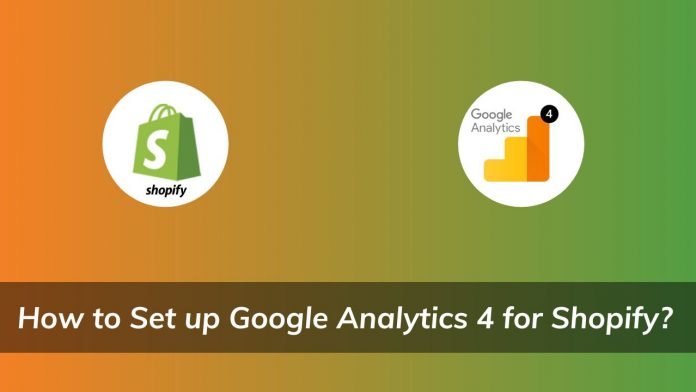Recently, Google Analytics has introduced GA 4 (Google Analytics) which has multiple unique features available for online stores. Moreover, Google also announced that they are sunsetting the universal analytics properties. And all the historical data will be available only for a limited time in Universal Analytics. Perhaps, the native integration for Shopify with the GA4 was not available later on, which made that available. The new version of GA4 is great news for Shopify brands that rely on Google Analytics to monitor traffic, behavior, attribution, and much more. Most merchants find it hard to integrate Google Analytics 4 into their custom eCommerce store. So, they reach out to an eCommerce web development company to set up and integrate their store to Google Analytics.
Are you interested in scaling your Shopify business? If yes, then you will require to make adjustments based on the data analytics instead of making assumptions. So, when you implement Google Analytics in your online store, it will provide all the essential information to optimize the store to increase search visibility, revenue, and conversions. We will discuss how to install Google Analytics 4 on your Shopify Store.
What is Google Analytics?
Google Analytics is a free web analytics platform that is used to measure a range of data across a website. These metrics include traffic, click-through rate, conversions, bounce rates, time on page, and much more. With this free tool, you can run a successful eCommerce store because it has all the essential information.
Being a merchant, you might run several ads, collaborate with the influencers, and send out email campaigns. These promotional efforts will include a link to your online store. With the help of Google Analytics, you can get to know how many people interacted with your campaign and made the conversion.
The merchant will be able to monitor all of their marketing funnels in one location with this data analytics tool. Also, they will be able to see total sales and average order value in the holistic view to create bespoke reports that highlight the data.
Difference between Google Analytics 4 and Universal Analytics
The measuring model used by Universal Analytics and GA4 is the most significant distinction. Universal Analytics uses a session and page view-based measuring approach. A session is a collection of user engagements (hits) with a website that occurs over a set period of time. Google Analytics 4 uses an event-based and parameter-based measuring methodology.
Removing monthly hit limits is another key distinction between Universal Analytics and GA4. Universal Analytics’ free version has a monthly restriction of 10 million hits. Instead, GA4 can capture limited events (500).
However, GA4 is built on brand new technology and infrastructure, allowing for a slew of new features and reports. Among them are:
- Machine Learning (ML) and Artificial Intelligence (AI) are used to do predictive analyses.
- Features for Empowered Segments and Audiences
- Creating completely unique reports (tables or visualizations for cohorts, paths, funnels, or segments)
- Scroll, video_view, first_time_visit, and many more events are automatically captured.
- GA4 collected Up to 30 conversions and 300 events.
- Changing the default tables, reports, and menus
- Anomaly detection with AI
In fact, there are some crucial differences between Google Analytics 4 and Universal Analytics. And it is essential that you need to understand it.
How to Set up Google Analytics4 in your Shopify store?
Many Merchants are unable to integrate Google Analytics with their Shopify Store. They need the help of an eCommerce web development company that is experienced in handling custom development and integration. However, we have discussed the steps to set up Google Analytics 4 to monitor the conversion and traffic on the online store. Here we have set up GA4 using the Google Tag Manager because you can use GTM for Google ads conversions.
In fact, the professionals can help you create the tracking code in the Google Analytics account. They can even help you implement the tracking code to your Shopify store.
- First of all, navigate to the online store from your Shopify store. After it, click on the themes, and you will see the option of customizing the theme. Click on the Actions and select the options of Edit the theme.liquid file.

- Here, you have to paste the tracking code between the head tags and click on Save.
- Further, add the tracking code to the page of Order confirmation.
- Navigate to Settings and click on the Checkout. Here, you need to add your modified tracking code to the Additional Scripts section.
- Next, exclude Shopify as a referral in GA4 to ensure sales are attributed to correct marketing channels. In fact, you will need to protect the Shopify checkout pages from showing up in the reports. And to do this, you will need to open your data stream in Google Analytics and tap on ‘ More Tagging Settings’ to select ‘List Unwanted Referrals’.
- However, you will not be able to see the people who are visiting your checkout pages in GA4 and add Universal Analytics to the Shopify store. And to do this, navigate to the Online Store and click on Preferences and add property ID under Google Analytics.
How to validate data in Google Analytics?
When you get your custom e-commerce development of your store, the first thing that comes to your mind is whether it will bring traffic to the store or not. So, if you want to check the real-time reports of your Shopify store, you can get in touch with the eCommerce development company.
- You need to navigate to your Google Analytics 4 account and click on the Reports.
After it, click on the Real-time and click on the Engagement
- Here, you can see the users in the real-time reports of the GA4.
Wrapping Up
We hope our blog provides you with the essential information on Google Analytics 4 and its set up in the Shopify store. Hence, if you want to integrate GA4 in your Shopify store, you can communicate with an eCommerce web development company. The professionals of the agencies will follow all the steps to help you monitor the traffic, conversions, and revenue of the online store.
















